TURBOdesign Suite 2022R1 is a gateway to automation in Turbomachinery design with the following major enhancements.
A major theme of 2022R1 release is Automation. We have taken important steps by integrating TURBOdesign Optima inside TURBOdesign1 which enables direct selection of designs in TURBOdesign1’s Project window for automatic optimization and the results are then brought back to Project window for comparison with manual designs. This coupled with the unique (machine learning driven) automatic range set up system for design parameters streamlines further unique capabilities for 3D inverse design method for turbomachinery design automation.
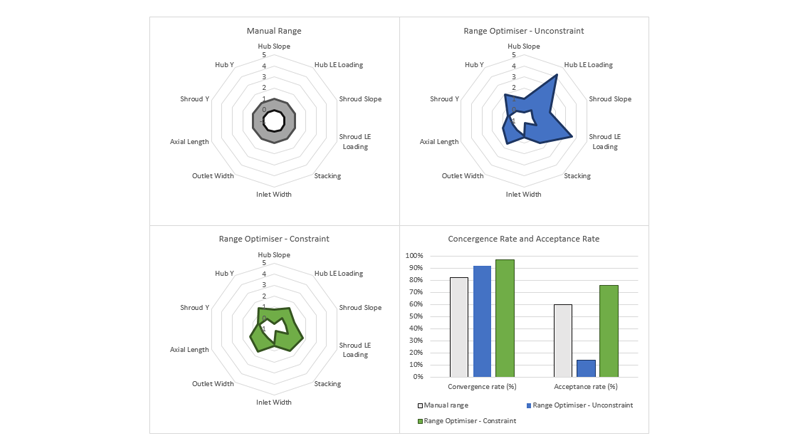
Comparison of the range for selected input parameters between a manual setup and machine learning, both constrained and unconstrained
In this release, ‘Rapid Single Point’ design optimisation has been added in TURBOdesign1 (equivalent to Workflow 1 in TURBOdesign Optima). This supports most TURBOdesign1 setup parameters as inputs and performance data as constraints and objectives (including the new quantitative measures available in 2022.1).
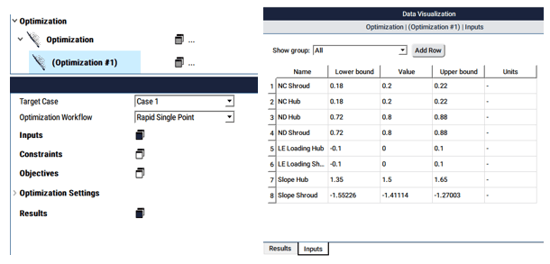
Optimisation setup in TURBOdesign1
The optimisation runs interactively, producing result plots and tables and allowing users to rapidly study any of the candidate designs simply by choosing a result and doing ‘Analyze case’. The optimisation runs can be paused and continued instantly in order to optimise resources and to study designs as the optimisation progresses.
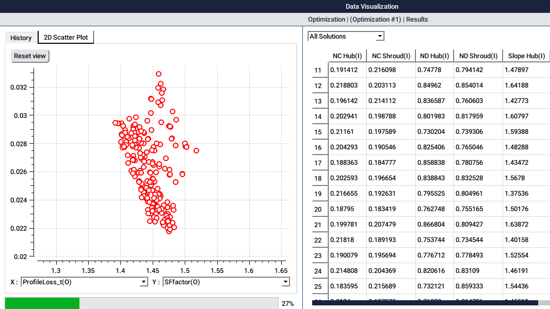
Optimisation results in TURBOdesign1
An additional capability developed in this release is the automatic calculation of optimisation input ranges, removing the need for users to estimate the useful/valid ranges of their input parameters. This is exposed in two ways: ‘Estimate input ranges’ uses an Initial Search’ algorithm to determine the range of values that will likely deliver converged results in TD1. The ‘Optimize input ranges for DoE’ is an advanced option that performs an additional DoE search to optimise the ranges for a DoE analysis (not yet supported in TURBOdesign1). The resulting input parameter ranges can be transposed into TURBOdesign Optima to help achieve better results in Workflow 4.
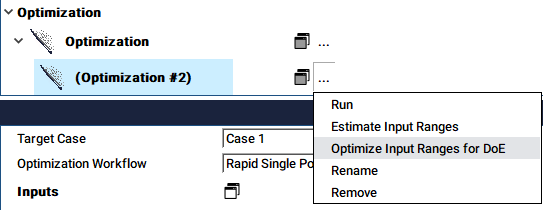
Range Optimisation in TURBOdesign1
Over the coming releases, all of the functionality from TURBOdesign Optima will be migrated into TURBOdesign1.
The use of machine learning automatically computes the best range of design parameters to explore a large design space in such a way that meets convergence requirements. It can also adjust the range of design space to take account of any constraints in optimization. Key for success of surrogate model based optimization.
We will also showcase the new scripting functionality of TURBOdesign Volute which can be used for parametric studies or design optimization. The new functionality uses an XML file to control the volute geometry which is exported automatically as a wateright IGES file with labelled surfaces such as inflow, outflow and wall for direct communication with CFD meshing.
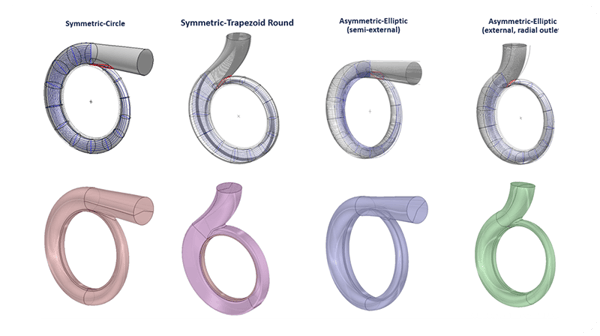
This functionality is further enhanced by integrating TURBOdesign Volute inside Ansys Workbench, which enables automatic optimization of whole stages or multi-stages.
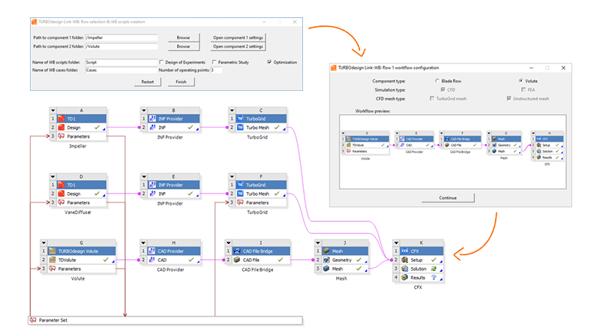
We also introduce a new Traffic Light System with colour coded feedback on designs based on important criteria for each machine type. Also, we have made extensive enhancements to scripting functionality in TURBOdesign1 providing further flexibility in using TURBOdesign1 with any inhouse commercial optimization tools with the functionality to use any externally produced thickness, meridional shape or stacking files.
Playback Webinar on TURBOdesign 2022R1 Release
In this webinar, you will:
- Learn how the integration of optimization with the unique automatic range set up system inside TURBOdesign1’s 3D inverse design method can be a gateway for automation in 3D Turbomachinery design;
- Discover how scripting functionality in TURBOdesign Volute can make fully automated whole stage optimization a reality;
- Understand how the integration of TURBOdesign Volute and TURBOdesign1 inside Ansys Workbench can enable fully automated design optimization of whole stages of radial pumps, compressors, fans and turbines.
Mehrdad Zangeneh
Mehrdad Zangeneh is Founder and Managing Director of Advanced Design Technology and professor of Thermofluids at University College London.
View All Articles






Share This Post